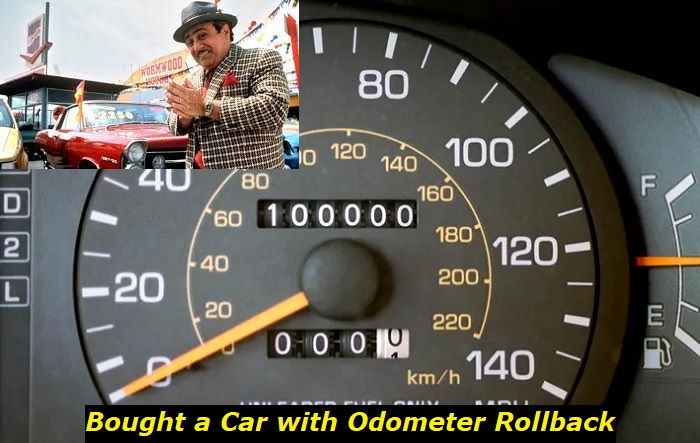Mercedes Benz is a prestigious brand that is cherished by millions of drivers across the world. A Mercedes Benz is adorned with many technological advances and apps such as ABS, ESP, and EBD, making it stand out. Owning a Mercedes Benz, no matter the 'Class' or trim, you are guaranteed to enjoy the very best a luxury car can afford.
EBD, ABS, ESP inoperative message highlights
- Common reasons:battery problems, wheel-speed sensor, ECU problems
- How to fix:check the 12V batteries, have the vehicle inspected
- Possible consequences:no safety features available
- Priority level:High
- Can you drive?Carefully
- DIY repair:Impossible
- Repair price range:$200-$450

EBD - Electronic Brake Force Distribution
Electronic brakeforce distribution, abbreviated EBD or EBFD, is also called electronic brakeforce limitation (EBL). It is a brake technology employed by Mercedes and other car makers which automatically varies and regulates the amount of force applied to each of the wheels. This braking is done depending on the vehicle's speed, the load inside, the conditions of the road, and numerous other things. EBD provides enhanced intelligent control of the braking of the vehicle as it balances which wheels to apply what amount of braking pressure.
ABS - Anti-Lock Braking System
The anti-braking system, or ABS, as its commonly called, is a braking system employed by Mercedes to prevent the brakes from locking up. The system is designed in such a way that even if you apply too much brake pressure, the car's axle will not stop turning. ABS in your Mercedes ensures you can continue steering even as you brake.
When driving a Mercedes Benz and you feel a certain pulsating when you depress the brake pedal, it means the ABS has kicked in. The pulsating lets you know that the road conditions aren't ideal and you should take care.
The difference between the ABS and the EBD is that ABS is designed to ensure the wheels don't lock up under heavy braking. EBD, conversely, ensures that each of the wheels gets the correct amount of braking force during braking.
ESP - Electronic Stability Program
ESP is a program meant to continually take and measure data from different sensors, such as the RPM sensor, the steering angle sensor, the lateral acceleration, and the yaw rate sensors. ESP is designed to help the driver whenever the vehicle enters an unstable driving condition. ESP acts in a matter of milliseconds to help build direction-stabilizing brake force. It achieves this by selectively intervening using engine electronics and brake systems.
The 'EBD, ABS, and ESP are inoperative; see the Owner's manual' message
Many Mercedes Benz drivers report to have experienced or encountered the 'EBD, ABS, and ESP inoperative' message. The message which appears on the dashboard further continues to advise the driver to see the Owner's manual. The 'run flat indicator inoperative' warning light can sometimes pop up as well. Whenever your vehicle gives you these warning warnings, it is critical that you get the issues attended to as soon as possible. The ABS, EBD, and EPS systems enhance your car's safety and performance.
What causes the 'EBD, ABS, EPS Inoperative' warning light?
When the 'EBD, ABS, EPS inoperable' warning light comes on in the dashboard, you should know that the vehicle's performance and safety become compromised. Some causes of this light popping up are complex, while others are straightforward and easy to solve.
1) Faulty ABS module
The ABS module controls or affects the braking system of your Mercedes. A malfunction on its part leads to the ABS warning light appearing on the dash. Besides the ABS light, you will see the EBD light because they are interconnected.
A faulty ABS module can be characterized by a faulty speedo, a difficult-to-operate brake pedal, and the steering wheel becoming stiff. The vehicle then switches to limp mode. If you restart the engine, the warning light may not appear, and you can drive your car for up to 10 mph, after which the light pops up.
Solution
Attaching a STAR OBD diagnostic scanner to your car is the answer to this problem. This scanner reads all the errors without lumping or omitting some. The scanner should help you see if the ABS is the problem and the extent of the problem.
Replacing the ABS module is not cheap, but it saves you a lot of trouble later on. Many Mercedes owners who went this route spent between $1,500 and $2,500. Take note that the ABS module has to be coded to your car, and this is where you must consult a Mercedes Benz expert.
You can opt for ABS module repair, which doesn't require coding. You will need to remove the module and send it to the repairers. The total repair cost should be about 10% of the cost of replacing the whole thing.
2) Wiring problem
The connectivity between the ABS module, the RFI (run flat indicator), the instrument cluster, and the power source should be uninterrupted. If some wire corrodes, the 'EBD, ABS, EPS inoperative' light will likely pop up.
Solution
The answer to the problem is to use an OBD scanner and run a diagnostic test. A wiring expert will help you solve this problem. The cost will depend on the extent of damage to the wiring network.
3) Faulty SBC (Sensotronic Brake Control)
The SBC module is specifically found in Mercedes-Benz cars and operates the brakes using brake fluid. A piston pump powered by an electric motor supplies regulated brake fluid pressure from a high-pressure reservoir at a pressure ranging from 140 to 160 bars.
Solution
The failure of this unit leads to the EBD, ABS, EPS warning light and can also lead to the run-flat inoperative warning light. The solution is to repair the SBC, but replacement is more likely to be effective. The cost is around $2,500, and that's why you should take your car to an expert to run the proper diagnostics.
4) Software issues
Once now and then, Mercedes issues updates to the operating systems of the various systems in the Mercedes Benz cars. Failure to update the software running the ABS, EPS, or the SBC and RFI can lead to the said warning light popping up. There are some instances when the software can be corrupted.
Solution
The solution to this problem is updating and reinstalling the corrupted software. This is a relatively inexpensive exercise.
5) Age or mechanical problems
As your car ages, the parts and systems running in it age and deteriorate. Some parts, such as the ABS, can act up, and you may find the EBD, ABS, and EPS inoperative error popping up intermittently. This is not to say you should feel okay driving your car that throws all manner of warning lights. However, if the warning light is one of the many that you have had to deal with in the past year, then it is time to ask yourself whether the time has come for you two to part ways.
Solution
Some drivers have reported seeing this warning light in their cars after recently hitting a pothole. Hitting a pothole can have numerous repercussions, including the EBD, ABS, and EPS warning lights. Have the car checked to establish what part or system was affected. It could be a disconnected component or some loose wire.
6) Weak 12V battery
A weak or dead battery can cause this problem to arise. It can lead to the disabling of the power steering, making steering very stiff. This problem can disappear if you restart your car. In other cases, you could have a system or component draining power when the car is parked overnight. When you jump-start your car, you will likely see the EBD, ABS, and ESP inoperative warning lights. You should solve the electrical problem causing a power drain before resolving the ABS issue.
7) Bad sensors
Your Mercedes is able to operate smoothly because the numerous sensors installed in it function as intended. A bad sensor tasked with receiving and sending crucial brake system data can malfunction, leading to the whole braking system malfunctioning.
Some of the sensors known to cause this problem include the steering angle and wheel speed sensors. By using the STAR scanner, you will be able to know which sensors are causing trouble and replace them.
Conclusion
Most of the basic information required to diagnose and solve the EBD, ABS, and ESP inoperative problem is found in the Owner's manual. It is for this reason Mercedes refers the driver to the manual because you will find most of the information you need there. After reading the above causes of the mentioned problem, you will have an easier time dealing with it whenever it happens.
About the authors
The CarAraC research team is composed of seasoned auto mechanics and automotive industry professionals, including individuals with advanced degrees and certifications in their field. Our team members boast prestigious credentials, reflecting their extensive knowledge and skills. These qualifications include: IMI: Institute of the Motor Industry, ASE-Certified Master Automobile Technicians; Coventry University, Graduate of MA in Automotive Journalism; Politecnico di Torino, Italy, MS Automotive Engineering; Ss. Cyril and Methodius University in Skopje, Mechanical University in Skopje; TOC Automotive College; DHA Suffa University, Department of Mechanical Engineering






Add comment